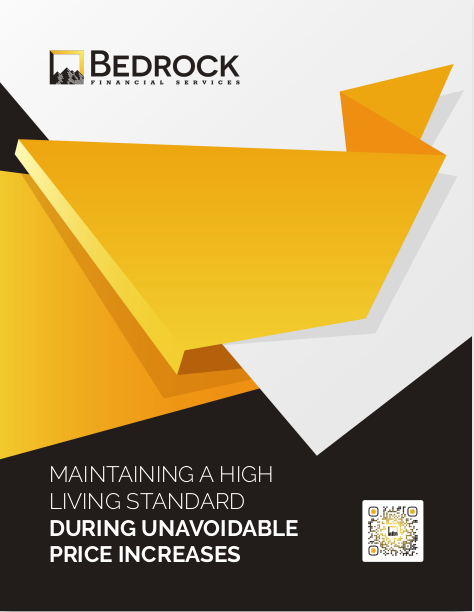Key Takeaways
-
If you want clients to brag about you online, the experience you offer has to be memorable, specific, and emotionally resonant. It doesn’t start with a review request. It starts with how you make them feel.
-
Systems matter. A client who raves about you online usually isn’t acting on impulse—they’re reacting to intentional follow-up, guided prompts, and authentic connection.
Why Online Praise Matters More in 2025
Online reputation isn’t optional in 2025. You’re not just competing with other agents—you’re competing with algorithms, with digital footprints, and with clients who trust reviews more than your credentials. According to current data trends, nearly 90% of consumers read online reviews before engaging with any service professional, and insurance is no exception.
When a client sings your praises online, they’re doing more than saying thank you. They’re selling for you. They’re placing you in someone else’s consideration set without you having to lift a finger. But the key lies in creating moments worth talking about—and making it easy to talk about them.
It Starts With How You Make Clients Feel
Long before a client clicks “Leave a Review,” they’ve formed a feeling about you. That emotional residue is what shapes whether they’ll bother recommending you—or forget you altogether.
Clients don’t brag about paperwork. They brag about how seen, safe, and taken care of they felt.
Emotion Drives Online Behavior
Most reviews are emotionally driven. Clients won’t remember every coverage detail you explained, but they will remember:
-
How you handled their confusion with patience
-
How proactive you were during a policy change
-
How easy you made it to understand a difficult choice
Emotionally satisfied clients are far more likely to write voluntarily. That’s the moment when your service crosses from “transaction” to “talk-worthy.”
What Makes Someone Want to Post a Review
You probably already deliver strong service. But that alone isn’t enough. In 2025, people are more distracted, busier, and more fatigued by requests. You need to move past good service and into “specific reasons to rave.”
1. Micro-Moments of Wow
Did you check in when you didn’t have to? Did you offer an unexpected resource? Did you send a follow-up text that made their day easier? These don’t have to be grand gestures. What matters is that they’re:
-
Unexpected
-
Personal
-
Useful
2. Positive Pattern Recognition
Clients tend to share when they can see a pattern. One good interaction can be luck. Three in a row becomes your brand. Be consistently helpful, not just in sales, but across the lifecycle: onboarding, claims, renewals, and referrals.
3. Subtle Triggers That Invite Sharing
Create tiny prompts that normalize feedback:
-
“If there’s anything we could’ve done better, I’d love to hear it.”
-
“People often ask how we’ve helped others—would you be open to sharing a line or two?”
-
“If this was helpful, feel free to leave a quick review—it helps us a ton.”
These lower the barrier and keep the tone human, not corporate.
Timing Is Everything
When you ask matters just as much as how. And unfortunately, most professionals ask at the wrong time—usually when the emotional high has faded.
Here’s what works better in 2025:
Right After the Relief
As soon as the pain point is resolved (not when the paperwork is signed), ask while they’re still feeling the relief. That might mean:
-
The moment a claim is processed quickly
-
The day a confusing situation becomes clear
-
The week they get approved for something they were nervous about
The closer you are to the emotional peak, the more likely they’ll respond enthusiastically.
Within 3–7 Days Post-Interaction
If you’re automating follow-ups, space them 3 to 7 days after your last helpful touchpoint. That window is long enough to give them breathing room—but short enough that the experience is still fresh.
Monthly Feedback Windows
Some agents find success in setting monthly check-in cycles. For clients who’ve completed a renewal, signed on recently, or referred someone, a soft follow-up at the end of the month helps you collect feedback in a structured but friendly cadence.
Make It Easy to Say Yes
Even if someone loves your service, friction kills follow-through. You have to remove every obstacle that gets in the way of them sharing something kind online.
Simplify the Path
-
Give them a direct link to your preferred review platform
-
Let them write a quick sentence via email or text
-
Offer a menu of quick prompts: “What was your favorite part of working with us?”
Create Templates (But Not Scripts)
Some clients want to help but freeze when they open the review page. Giving them a few examples can help, such as:
-
“[Agent] made everything feel less overwhelming. I finally understood what I was buying.”
-
“I felt like I could ask anything without being rushed.”
-
“They followed up when no one else did. That made all the difference.”
Let these serve as a jumpstart—not a copy-paste.
Create Share-Worthy Experiences
You can’t control what a client says. But you can absolutely influence what they feel compelled to talk about.
Design the Experience With Talk-Value in Mind
Ask yourself:
-
“Is this something a client would tell a friend about?”
-
“Did I do something today that made their life easier, not just their policy better?”
-
“If I read a review that mentioned this, would I want to work with me?”
Talk-value doesn’t live in the transaction. It lives in the transformation.
Add a Personal Signature to Your Service
In a digital world, small human touches stand out. Clients don’t rave about generic service. They rave about:
-
Handwritten notes
-
Customized thank-you videos
-
Remembering personal details at the next call
That kind of service feels like a relationship, not a sale.
Use the Right Platforms for Visibility
Not all praise is equally visible. In 2025, search engines, AI-generated summaries, and review aggregators scan for credibility and relevance. Choose platforms where your reviews won’t just live—they’ll get seen.
Prioritize These Channels
-
Google (most trusted and searchable)
-
Facebook (easy for mutuals to validate)
-
LinkedIn (ideal for B2B or commercial clients)
-
Email testimonials (great for case studies or permission-based marketing)
Make sure to request permission before sharing anything a client writes. And always anonymize when needed.
Reinforce the Behavior Over Time
Review collection isn’t a one-time campaign. The best insurance agents treat it like a culture.
Celebrate the Reviews You Get
-
Highlight reviews in your newsletter
-
Reply to every single one publicly
-
Share kind words in your stories or social media (with consent)
When people see others talking positively about you, they’re more likely to want to join in.
Thank Reviewers Personally
Don’t automate your gratitude. If someone took time to say something thoughtful, reply with the same thoughtfulness. A one-sentence DM or thank-you email can go a long way toward future referrals.
A System That Feeds Itself
If you build a process that invites reviews regularly, you’ll no longer have to chase them. Instead, the system creates its own momentum:
-
Clients feel taken care of
-
They receive subtle prompts
-
They follow through with minimal effort
And the next prospect who sees that review? They come in warmer, more trusting, and more open to choosing you.
Turn Happy Clients Into Your Loudest Advocates
Client reviews are no longer optional—they’re expected. But they only work when they’re real, fresh, and emotionally resonant. That means you can’t just ask for reviews. You have to earn them.
If you’re ready to become the kind of agent clients rave about online, you don’t have to do it alone. At Bedrock Financial Services, we help independent agents like you create meaningful client experiences, simplify systems, and turn those systems into organic growth engines.
Our training, tools, and automation strategies are built to help you stay consistent, visible, and referral-ready.
Sign up today to see how we can support your growth with better client engagement, smarter follow-up, and systems that do the heavy lifting.







